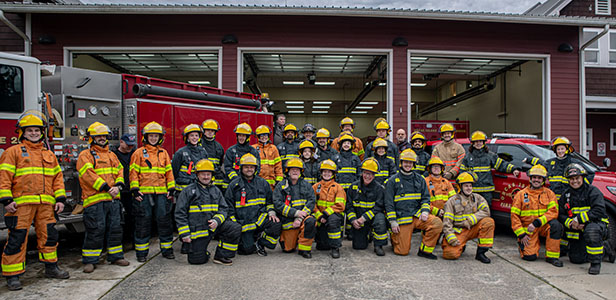— from Russel Barsh, Kwiat, Corrected Nov. 24. at 10 a.m. —
Scientists have expressed increasing concern over the accumulation of endocrine-disrupting compounds (EDCs) such as dioxins and PCBs in the planet’s rivers, lakes, and the oceans. At high levels in food EDCs can cause developmental defects in children. But long before they reach levels in food that affect humans, EDCs will probably reduce our food supply by interfering with the fertility of fish. And while most countries are cutting back on the manufacture and use of some of the better-understood endocrine disrupters, such as Bisphenol-A, new compounds continue to be developed, manufactured and sold that turn out to have endocrine disrupting properties.
After a discussion of the potential threat to fish of EDCs in shampoos, cosmetics and body-care products, students are Orcas Middle School participated in a screening- level study to determine whether Orcas Island is a source of new-generation EDCs in the surrounding marine environment.
The focus of the study was Alkyl Phenyl Ethoxylate (APE), a family of synthetic chemical compounds used as emulsifiers in a wide variety of consumer products, ranging from paints and herbicides, to shampoos and cosmetics. In the environment, APE breaks down into Nonyl Phenol (NP), which is more persistent. APE and NP are both estrogenic hormone mimics: that is, they can act like estrogens in the bodies of vertebrates, resulting in the development of non-functioning reproductive organs. Aquatic vertebrates such as fish and amphibians are the most exposed to APE and NP and are especially at risk.
As little as 50 parts per billion APE in water (0.000005 percent) have been shown to affect the development and survival of aquatic animals. But APE has been difficult and expensive to measure, so relatively little is known about how much APE is already in the environment, or how effectively APE is removed by treatment of sewage and road runoff.
Orcas students working with Russel Barsh of Kwiaht acquired antibodies to APE recently developed by a Japanese company and distributed in North America by Abraxis, LLC, a Pennsylvania R&D firm. Using the antibodies, and a scanning spectrophotometer purchased for research and student training last year with the help of local donors and the Orcas Island Community Foundation, they were able to measure very small quantities of APE in the local environment.
Laura Tidwell’s marine science class collected water samples from lakes, ponds, storm sewers and the sewage treatment plant. Samples were concentrated using activated graphite cartridges, then reacted with antibodies. Students Sofia Fleming, Emma Thoron, and Tashi Litch worked after school hours to complete sample preparation and testing.
Results are encouraging, but not grounds for complacency.
The highest levels of APE were found, not surprisingly, in the sewage entering the Eastsound treatment facility: 30-40 parts per billion, nearly enough to cause adverse effects in fish. But treatment reduced this to less than 5 parts per billion before sewage left the facility.
Runoff from Eastsound streets through the storm sewer system to Fishing Bay and Indian Island tested at 11-15 parts per billion APE, or two to three times as much of these endocrine disrupting compounds as students found in treated sewage effluent. Sources of APE on streets include leaking automotive fluids (oils, transmission fluid, brake fluid and antifreeze, window washing fluid). Outdoor washing of cars, windows and sidewalks can also be a source of APE. Some form of remediation along Eastsound streets such as small rain gardens could help impound street-borne APE before it contaminates the fish and eelgrass meadow around Indian Island.
Lakes popularly used for camping and boating (Cascade and Killebrew) tested at 13-19 parts per billion APE. Swimming, bathing and washing dishes at the lake edge with shampoos, soaps and cosmetics could be responsible for this APE signal, which could be a concern for the freshwater fish in these lakes.
Nearly all of the private ponds and streams tested had detectable APE, but mainly below 5 parts per billion. Properly maintained septic systems should detain most APE in kitchen and bath drainage water.
In brief, students identified untreated street runoff as the largest local source of APE entering the marine environment around Orcas Island. Another Orcas student team, also sponsored and coached by Kwiaht scientists, has already designed a “rain garden” to treat half of the runoff from the high school parking area, and they plan to build it before the end of this school year!
For more information contact: kwiaht@gmail.com
**If you are reading theOrcasonian for free, thank your fellow islanders. If you would like to support theOrcasonian CLICK HERE to set your modestly-priced, voluntary subscription. Otherwise, no worries; we’re happy to share with you.**








Very interesting. Thanks for sharing.
Imagine Middle School students collecting such significant data! Thank you Russell Barsh, Kwiat, Orcas Middle School and teachers involved in this project for offering students such a valuable experience.
Thank you KWIAHT and students for excellent work and pursuit of important information.